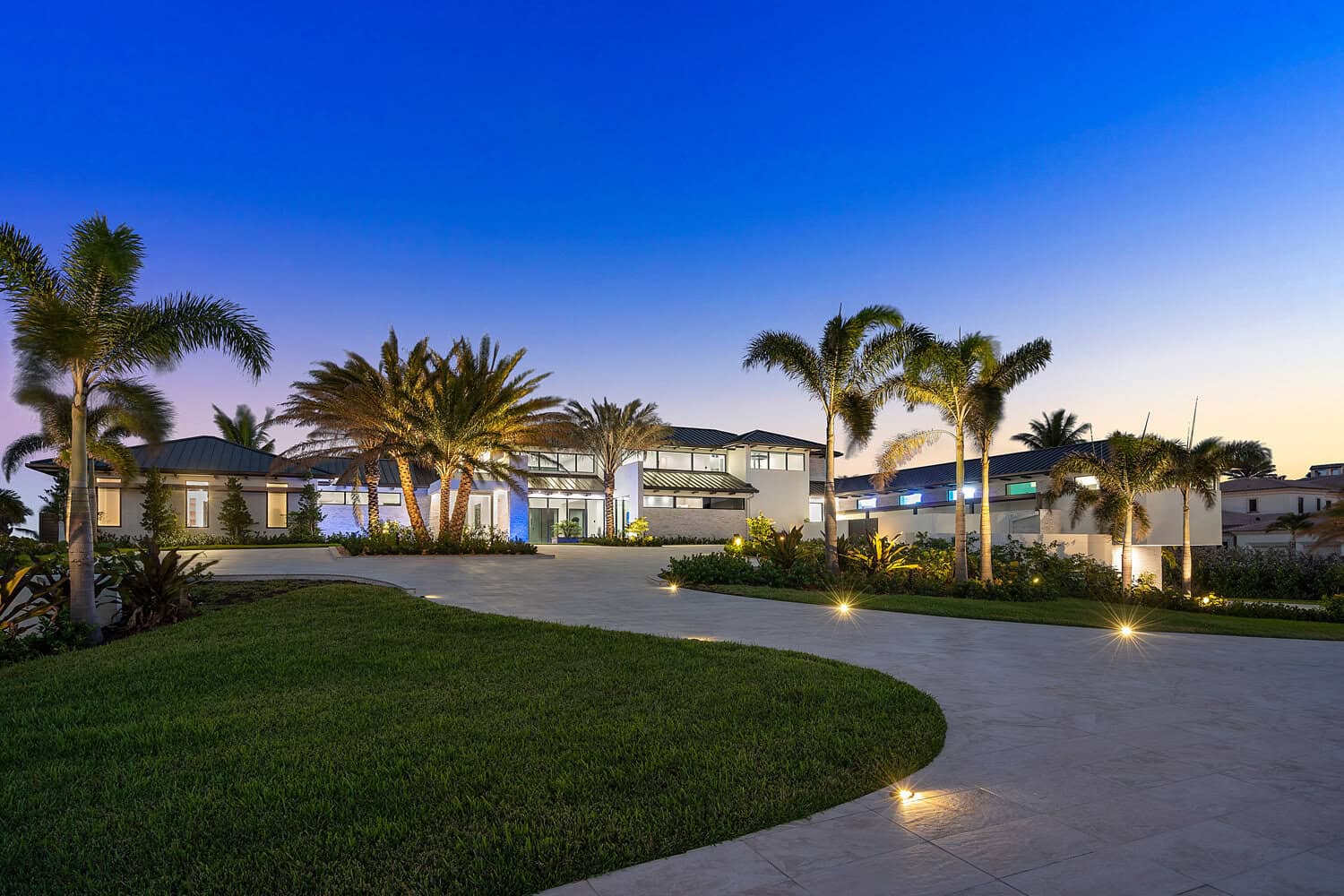How Long Does It Take to Build a Custom Home?
Building a custom home is an exciting and rewarding journey, but one of the most common questions homeowners have is, “How long does it take to build a custom home?” While the answer can vary depending on several factors, understanding the general timeline can help set expectations and guide you through the process. In this blog post, we’ll cover the factors that impact your home construction timeline, the average time it takes, and tips for speeding up the process.
 How Long Does It Take To Build A Custom Home? Factors That Affect The Timeline
How Long Does It Take To Build A Custom Home? Factors That Affect The Timeline
1. Design and Planning Stage: The design and planning process is the first phase of building a custom home and can take anywhere from a few weeks to several months. This phase involves selecting the right floor plan, finalizing architectural designs, and obtaining permits. If you have specific design preferences or wish to work with a custom architect, this can extend the timeline. Built for sale homes, on the other hand, often have quicker construction timelines due to pre-selected designs and modular construction methods.
2. Choosing the Right Lot: Finding the perfect lot for your custom home is an essential step in the process. Depending on the location, size, and zoning requirements of your chosen lot, this phase could take anywhere from a few weeks to several months. Lot preparation, including clearing trees, leveling the land, or dealing with drainage issues, can also add extra time to the process.
3. Permitting and Approvals: Before construction begins, you’ll need to secure permits from local authorities. The length of time it takes to receive approval for your project can vary depending on the area, zoning laws, and the complexity of your design. On average, permitting can take between 4-12 weeks, though this timeline can be longer in certain jurisdictions.
4. Construction Time: The actual construction of a custom home typically takes between 9 to 18 months, with the average project duration being around 12 months. This phase includes all the major construction milestones: pouring the foundation, framing, plumbing and electrical installation, roofing, and much more. The time needed depends on the size, complexity, and type of finishes involved. Construction duration significantly impacts the overall timeline, making the choice of builder and homeowner collaboration crucial.
5. Weather and External Factors: Weather can play a significant role in the construction timeline. Rain, snow, and extreme temperatures can delay outdoor work such as foundation pouring, framing, and roofing. Additionally, supply chain disruptions or labor shortages, especially during peak construction seasons, can extend the timeline. Construction timelines can also be influenced by factors like site location and design changes, emphasizing the need for early collaboration among architects and builders.
6. Finishing Touches: Once the major construction work is done, it’s time for the finishing touches. This includes interior work like installing cabinetry, flooring, painting, and adding fixtures. Depending on the complexity of your design and the quality of finishes, this phase can take anywhere from 1 to 3 months. High-end materials or custom design elements may extend this phase.
Pre-Construction Phase
The pre-construction phase is a critical stage in the custom home building process. It typically lasts between 1-3 months and involves several essential steps that set the stage for a smooth and successful construction project. During this phase, the homeowner and builder work together to finalize the design, secure financing, and obtain necessary building permits.
The pre-construction phase includes:
- Initial Consultations and Feasibility Studies (1-2 weeks): This step involves discussing the homeowner’s vision, assessing the feasibility of the project, and setting initial expectations.
- Site Evaluation and Survey (1 week): A thorough evaluation of the chosen lot to understand its characteristics and any potential challenges.
- Design and Architectural Plans (3-6 weeks): Collaborating with architects to create detailed design plans that align with the homeowner’s vision and comply with local regulations.
- Budget Finalization and Cost Estimation (2 weeks): Establishing a realistic budget and obtaining cost estimates for the entire project.
- Permitting and Approvals (2-4 weeks): Submitting applications and obtaining necessary building permits from local authorities.
A well-planned pre-construction phase can help avoid construction delays, ensure compliance with local regulations, and align the project with the homeowner’s vision and budget.
Weather and Seasonal Variations
Weather conditions can significantly impact the construction timeline of a custom home. Extreme weather events, such as heavy rain, snow, or high winds, can cause delays and even damage to the construction site. According to the National Oceanic and Atmospheric Administration (NOAA), the United States experienced 14 billion-dollar weather disasters in 2022, resulting in significant construction delays and losses.
To mitigate the impact of weather-related delays, builders and homeowners should:
- Factor in Weather-Related Delays: Incorporate potential weather delays into the construction timeline to set realistic expectations.
- Choose Weather-Resistant Materials: Select materials and construction methods that can withstand extreme weather conditions.
- Implement Weather-Resistant Techniques: Use construction techniques such as waterproofing and insulation to protect the site and materials.
- Monitor Weather Forecasts: Regularly check weather forecasts and adjust the construction schedule accordingly to avoid working during adverse conditions.
By taking these precautions, homeowners and builders can minimize the impact of weather-related delays and ensure a smooth construction process.
 Permitting Process
Permitting Process
The permitting process is a critical step in the custom home building process. It involves obtaining necessary building permits and approvals from local authorities before construction can begin. The permitting process can be time-consuming and unpredictable, potentially delaying the start of construction by weeks or even months.
To navigate the permitting process efficiently, homeowners and builders should:
- Research Local Building Codes: Understand the specific building codes and regulations in the area where the custom home will be built.
- Submit Permit Applications Early: Apply for permits well in advance of the planned construction start date to account for any potential delays.
- Ensure Complete Documentation: Make sure all necessary documentation and plans are complete and accurate to avoid rejections or requests for additional information.
- Communicate with Authorities: Maintain regular communication with local authorities to address any issues or concerns promptly.
By understanding the permitting process and taking proactive steps, homeowners and builders can minimize delays and ensure a smooth construction process.
How to Speed Up the Custom Home Construction Process
While building a custom home requires time, you can take steps to minimize delays and ensure the process is as efficient as possible: Managing a custom home build effectively is crucial to navigate potential delays and keep the project on track.
- Prepare Early: The more decisions you make upfront, the less likely you’ll face delays later. This includes finalizing your design, selecting materials, and obtaining necessary permits before construction begins.
- Work with an Experienced Builder: Choose a builder with a proven track record of completing custom homes on time and on budget. An experienced builder can navigate potential challenges and keep your project on track.
- Stay Flexible: Flexibility with design elements, material choices, and deadlines can help address unforeseen delays without impacting the overall project.
Pre-Construction Planning
Pre-construction planning is a crucial step in the custom home building process. It involves using tools like Building Information Modeling (BIM) to identify and resolve potential structural and design conflicts before construction begins. This can help prevent significant modifications during the build, which can cause delays and increase costs.
Pre-construction planning can save 1-3 months in the construction timeline by:
- Identifying Design Conflicts Early: Using BIM and other tools to spot and resolve design issues before construction starts.
- Ensuring Material and Labor Availability: Coordinating with suppliers and subcontractors to ensure that all necessary materials and labor are available when needed.
- Creating a Detailed Schedule: Developing a comprehensive construction schedule and timeline to keep the project on track.
- Coordinating with Subcontractors: Ensuring that all subcontractors are aligned with the project timeline and ready to start work as scheduled.
By investing time and effort in pre-construction planning, homeowners and builders can ensure a smooth construction process, minimize delays, and achieve their desired outcome.
FAQ: How Long Does It Take to Build a Custom Home? Understanding the Construction Timeline
Q: How long does it take to build a custom home from start to finish?A: On average, it takes 9 to 18 months to build a custom home. The exact timeline depends on the complexity of the design, the size of the home, and external factors such as weather or delays in supply chains. The process of getting a custom home built requires meticulous planning and design to accommodate future possibilities and ensure a smooth construction process.
Q: Can I speed up the homebuilding process?A: Yes! By making decisions early on, working with an experienced builder, and maintaining flexibility with design and materials, you can help ensure a more efficient timeline. A well-structured custom home project and hiring the right design-build team are crucial for aligning the project with your vision and budget, significantly impacting the timeline and feasibility.
Q: Does the location of the lot impact the construction timeline?A: Yes. The location of your lot can affect timelines in several ways. Issues like zoning regulations, land preparation, and access to resources can delay the start of construction.
Q: Are there ways to reduce construction delays?A: Delays are common, but you can reduce them by ensuring timely permits, staying in constant communication with your builder, and working closely to avoid unnecessary changes during the build process.
Q: What can cause delays in custom home construction?A: Delays can occur due to weather, permit approval issues, supply chain disruptions, or contractor scheduling conflicts. Proper planning and communication can mitigate many of these challenges.
Conclusion
Building a custom home is a significant and exciting project that requires careful planning and time. While the process typically takes between 9 to 18 months, understanding the factors that influence the timeline can help you stay prepared and proactive. The final phase, which includes interior finishes, is crucial as it brings together design choices like cabinetry, countertops, and flooring, significantly impacting the overall aesthetics and functionality of the home.
If you’re considering building a custom home and want a builder with over 20 years of experience in the industry, Watlee Construction is here to help. Serving Jupiter Island and surrounding areas, they specialize in luxury custom homes, ensuring your dream home is completed on time and to the highest standards. With expert guidance throughout every phase of the project, Watlee Construction is the partner you can trust for your custom home journey.


 How Long Does It Take To Build A Custom Home? Factors That Affect The Timeline
How Long Does It Take To Build A Custom Home? Factors That Affect The Timeline Permitting Process
Permitting Process